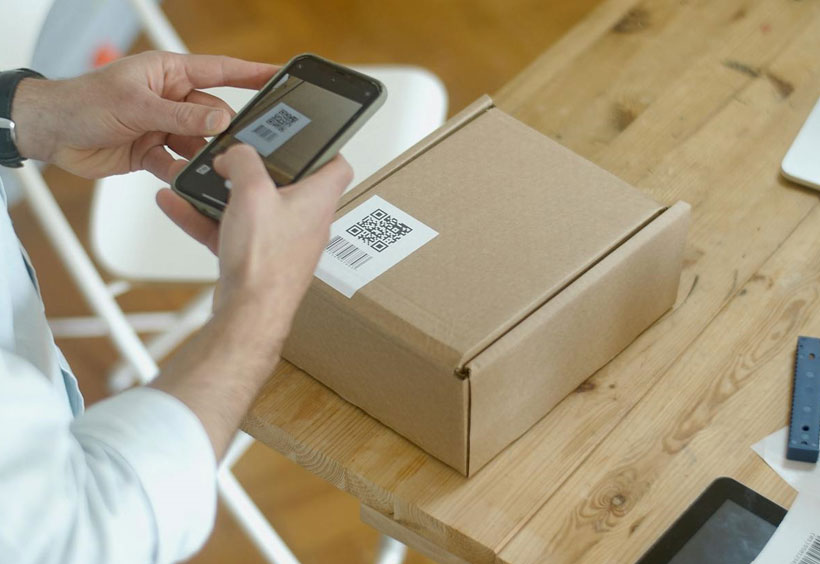How to Start a Dropshipping Business
Sparkpush Editorial Team
Updated November 21, 2023
Edited by: Mike Shelby

Table of Contents
- 1. Introduction
- 2. Finding Your Niche
- 3. Setting Up Your Online Store
- 4. Sourcing Suppliers
- 5. Listing Products and Pricing
- 6. How to Start a Dropshipping Business: Marketing and Promotion
- 7. Managing Orders and Customer Service
- 8. Pros and Cons of Dropshipping
- 9. Potential Income and Timeline
- 10. Dropshipping Statistics
- 11. Tips for Success
- 12. The Best Cities
- 13. Conclusion
1. Introduction
2. Finding Your Niche
Selecting the right niche is the fundamental first step in your dropshipping journey. Your niche defines the products you’ll sell and your target audience. To make this decision wisely:
- Follow Your Passion: Consider your interests and passions. Building a business around something you genuinely care about can be motivating.
- Market Research: Analyze market trends and demand. Use tools like Google Trends to see what’s popular and if people are actively seeking related products.
- Assess Competition: Check the level of competition in your niche. Look for opportunities with demand but less saturation.
- Profit Potential: Evaluate profit margins. Some niches offer better profits due to lower costs, while others are more competitive.
- Know Your Audience: Define your ideal customer’s demographics and interests. Ensure your niche aligns with their needs.
Selecting Your Niche:
- Brainstorm Interests: List your interests and hobbies as potential niches.
- Market Research: Use online tools to explore trending topics and industries.
- Competitor Analysis: Study competitors to identify gaps or opportunities.
- Keyword Research: Find popular search terms using keyword research tools.
- Profitability: Assess potential profitability, including pricing and costs.
- Validation: Test niche ideas through a small store or surveys.
- Passion Matters: Balance profitability with your passion and commitment.
A well-chosen niche sets the stage for your dropshipping success. It blends your interests with market demand, ensuring you’re motivated and appealing to customers. In the next chapter, we’ll explore the best ways to set up your store.
3. Setting Up Your Online Store
Establishing your online store is a crucial step in your dropshipping business. Here’s a concise guide to get you started:
- Choose the Right Platform: Selecting a reliable e-commerce platform is vital. Shopify, WooCommerce (a WordPress plugin), and BigCommerce are popular options. Shopify, for example, offers a user-friendly interface, robust features, and a range of customizable templates.
- Domain and Hosting: Register a domain name that aligns with your store’s identity. Consider a domain that’s easy to remember and reflects your niche. Opt for secure and reliable hosting to ensure your website runs smoothly.
- Customize Your Store: Customize your store’s design and layout to make it visually appealing and aligned with your brand. Use high-quality images and compelling product descriptions. Ensure a responsive design for mobile users.
- Add Essential Pages: Create essential pages like a homepage, product pages, about us, contact, and a privacy policy page. These pages build trust with customers and provide crucial information.
- Payment and Shipping Settings: Set up secure payment gateways to process customer transactions. Offer various payment options for convenience. Define shipping methods, rates, and delivery times.
- Install Necessary Apps: E-commerce platforms often support various apps and plugins to enhance your store’s functionality. Consider adding tools for SEO optimization, email marketing, and analytics.
- Test Your Store: Before launching, thoroughly test your website. Check for functionality, responsiveness, and any potential issues. Ensure a smooth and secure checkout process.
- Optimize for SEO: Implement search engine optimization (SEO) best practices to improve your store’s visibility on search engines. Use relevant keywords, optimize product descriptions, and create compelling content.
- User-Friendly Navigation: Design an intuitive navigation menu that helps customers easily find products and information. Organize your products into categories and provide clear paths for browsing.
- Launch and Promote: Once you’re satisfied with your store, launch it to the public. Start promoting your products through various marketing channels like social media, email marketing, and paid advertising.
Creating an attractive, user-friendly online store is essential for attracting and retaining customers. In the next chapter, we’ll delve into the critical aspect of sourcing reliable suppliers for your dropshipping business.
4. Sourcing Suppliers
Selecting reliable suppliers is vital for a successful dropshipping business. Here’s a concise guide:
- Research: Begin by researching potential suppliers on platforms like AliExpress, SaleHoo, or by reaching out to manufacturers directly. Look for good track records, competitive pricing, and a variety of products in your niche.
- Quality Assurance: Ensure product quality by reading reviews and ratings. Providing high-quality items builds customer trust.
- Reliability and Shipping: Choose suppliers known for reliable order fulfillment and reasonable shipping times. Fast and trackable shipping options are preferable.
- Communication: Maintain regular contact with suppliers to stay updated on product availability and resolve issues promptly.
- Negotiation: Don’t hesitate to negotiate pricing, minimum order quantities, and shipping costs for better profit margins.
- Dropshipping Agreement: Review and understand supplier agreements, especially terms related to returns, refunds, and warranties.
- Diversify Suppliers: Minimize risks by working with multiple suppliers to avoid disruptions in your business.
- Order Tracking: Ensure suppliers provide order tracking and share this information with your customers for transparency.
- Quality Control: Periodically order from suppliers to assess product quality and shipping times.
- Continuous Assessment: Regularly evaluate supplier performance and be ready to replace underperforming ones.
Choosing reliable suppliers and fostering strong relationships is crucial for your dropshipping venture. In the next chapter, we’ll discuss how to both list and price your products.
5. Listing Products and Pricing
Efficiently listing products and setting competitive prices are pivotal aspects of a thriving dropshipping business. Here’s a concise guide:
- Product Selection: Based on your niche, carefully choose products that resonate with your target audience. Focus on items with high demand and profit potential.
- High-Quality Imagery: Use clear, high-resolution images that showcase the product from various angles. Visual appeal significantly influences purchasing decisions.
- Detailed Descriptions: Write informative and engaging product descriptions. Highlight key features, benefits, and any unique selling points. Be transparent about product specifications and potential drawbacks.
- Keyword Optimization: Incorporate relevant keywords in product titles and descriptions to improve search engine visibility. Research and use popular search terms within your niche.
- Competitive Pricing: Analyze competitors’ prices to determine a competitive yet profitable price point. Consider factors like product cost, shipping fees, and your desired profit margin.
- Pricing Strategies: Experiment with pricing strategies such as tiered pricing, bundle deals, or discounts for bulk orders to entice customers.
- Dynamic Pricing: Utilize pricing automation tools that adjust prices in real-time based on market demand, competitor pricing, and your profit goals.
- Shipping Costs: Clearly communicate shipping costs and delivery times to customers. Offer options like free shipping, expedited shipping, or tracked shipping to cater to different preferences.
- Pricing Updates: Regularly review and update prices to stay competitive and adapt to market fluctuations.
- A/B Testing: Conduct A/B tests to gauge the impact of different pricing strategies on conversion rates and revenue.
- Customer Feedback: Pay attention to customer feedback and adjust prices or product offerings accordingly.
Remember that finding the right balance between competitive pricing and profitability is an ongoing process. In the next chapter, we’ll jump into marketing and how to get the right eyeballs on your business.
6. How to Start a Dropshipping Business: Marketing and Promotion
Effective marketing is crucial for your dropshipping success. Here’s a concise guide to boost your online store’s visibility and drive sales:
- Social Media Marketing: Establish a presence on key platforms like Facebook, Instagram, and Twitter. Share product images, engage with your audience, and consider paid ads for targeted reach.
- Email Marketing: Build an email list and send regular updates, promotions, and personalized content to your subscribers.
- SEO: Optimize product listings and website content for search engines by using relevant keywords and creating informative blog posts.
- Content Marketing: Develop a blog with niche-related articles and share them on social media and through email campaigns.
- Paid Advertising: Experiment with platforms like Google Ads and Facebook Ads to reach a broader audience.
- Influencer Marketing: Partner with influencers in your niche for product promotion.
- Affiliate Marketing: Launch an affiliate program to incentivize others to promote your products for a commission.
- Analytics: Regularly analyze the performance of your marketing efforts using web analytics tools and adjust your strategies accordingly.
Balancing these strategies while adapting to your niche and audience will help you create a strong online presence, drive traffic, and increase sales for your dropshipping business.
7. Managing Orders and Customer Service
Once your dropshipping business starts receiving orders, efficient order management and top-notch customer service are essential for long-term success.
Order Management:
- Automate Order Processing: Use order management software to streamline the order fulfillment process. This ensures that customer orders are forwarded to your suppliers quickly and accurately.
- Inventory Monitoring: Keep a close eye on product availability with your suppliers to avoid overselling items that are out of stock.
- Shipping and Tracking: Provide tracking information to customers and keep them informed about their order’s status. This transparency builds trust.
Customer Service:
- Prompt Communication: Respond to customer inquiries, concerns, and complaints promptly. Quick and helpful responses can turn frustrated customers into loyal ones.
- Returns and Refunds: Establish a clear return policy and handle returns and refunds efficiently. Make the process as hassle-free as possible for your customers.
- Quality Assurance: Ensure the quality of the products you offer. If a customer receives a defective item, resolve the issue promptly.
- Personalization: Personalize the shopping experience by addressing customers by their names and sending thank-you notes or special offers.
- Feedback and Reviews: Encourage customers to leave reviews and feedback. Positive reviews can boost your reputation, while constructive criticism can help you improve.
Managing orders and providing excellent customer service not only satisfies your current customers but also encourages repeat business and referrals. In the competitive world of dropshipping, exceptional service can set you apart and contribute to your business’s growth.
8. Pros and Cons of Dropshipping
Pros:
- Low startup costs
- No inventory management
- Location independence
- Wide product selection
Cons:
- Thin profit margins
- Limited control over stock
- Competition and market saturation
9. Potential Income and Timeline
Understanding the potential income and timeline of your dropshipping business is crucial for setting realistic expectations and planning for growth.
1. Income Potential:
The income you can generate through dropshipping depends on various factors:
- Niche Selection: A niche with higher demand and profit margins can lead to more significant earnings.
- Marketing Efforts: Effective marketing strategies can attract more customers and boost sales, directly impacting your income.
- Pricing Strategy: Finding the right balance between competitive pricing and profitability is key to maximizing income.
- Product Selection: Offering a diverse range of products can help increase your income potential.
- Customer Base: Building a loyal customer base over time can result in repeat business and higher revenue.
2. Timeline:
The timeline for achieving profitability and significant income in dropshipping can vary widely:
- Initial Phase: It often takes several months to set up your store, source products, and establish marketing channels. During this phase, you may be operating at a loss or breaking even.
- Growth Phase: As your marketing efforts gain traction and you build a customer base, you can expect to see gradual growth in sales and income. This phase typically occurs in the first year.
- Long-Term Success: Achieving substantial income and profitability often takes at least a year or more of consistent effort and optimization. Long-term success comes with continued marketing, customer retention, and expanding your product offerings.
It’s important to note that dropshipping success is not guaranteed, and it requires dedication, adaptability, and ongoing learning. While some entrepreneurs achieve profitability quickly, others may take more time. Patience and persistence are key to realizing the full income potential of your dropshipping business.
10. Dropshipping Statistics
In 2021, the global dropshipping market was valued at $111.28 billion and is projected to grow at a CAGR of 28.8% from 2022 to 2028.
- 84% of online sellers say that dropshipping has helped them grow their business.
- The average profit margin for dropshippers typically ranges from 15% to 45%.
- Over 23% of online retailers have adopted dropshipping as their primary order fulfillment method.
11. Tips for Success
- Prioritize customer service and build trust.
- Continuously research and update your product offerings.
- Test different marketing strategies to find what works best.
- Keep an eye on your competitors.
- Monitor your financials closely to ensure profitability.
12. The Best Cities
- New York City, USA: Access to a large and diverse consumer base.
- Los Angeles, USA: Hub for fashion and lifestyle products.
- London, UK: Ideal for targeting European markets.
- Sydney, Australia: Strong e-commerce growth and consumer demand.
- Toronto, Canada: Strategic location for North American markets.
13. Conclusion
Starting a dropshipping business can be a rewarding venture with the potential for significant income. By following the steps outlined in this guide, you can embark on your entrepreneurial journey and build a successful online store. Keep in mind the pros and cons, and stay informed about the latest trends in e-commerce to stay competitive in the market.









